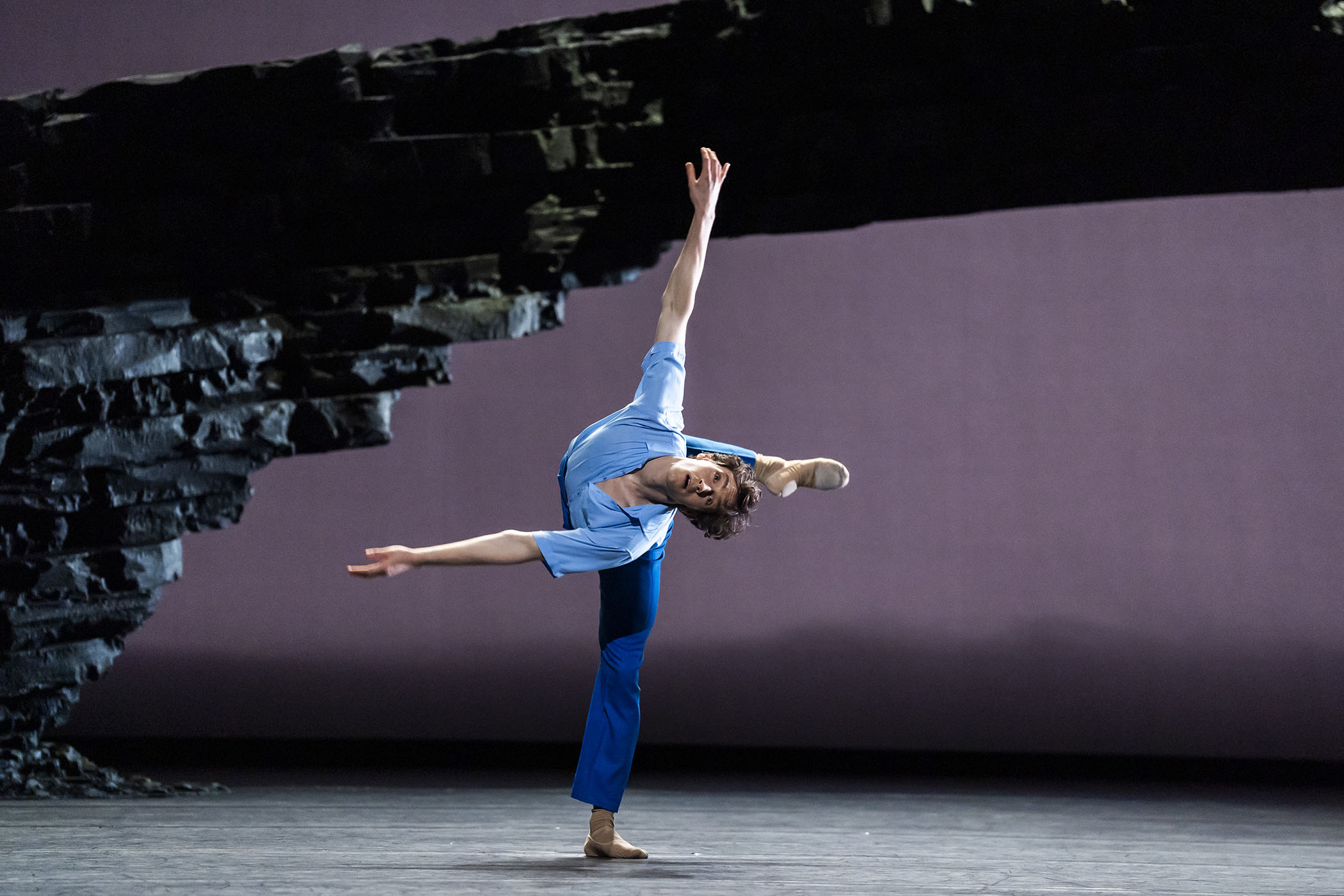Cathy Marston has made her name as a choreographer with sharply etched story ballets that either take on the plot of a well-known novel – Jane Eyre, Wuthering Heights, Snowblind (based on Edith Wharton’s Ethan Frome) – or, more ambitiously, derive their inspiration from true events such as Victoria, about the young queen, or The Cellist, which turned Jacqueline du Pré’s life into dance.
The fiercely elegiac Against the Tide is something else, neither quite narrative nor entirely abstract, but a stirring and evocative response to life and art. It’s set to Benjamin Britten’s Violin Concerto (stunningly played by Vasko Vassilev), written between 1938-9, just as the clouds of the second world war gathered, and the pacifist composer made his momentous decision to sail to America with his lover, Peter Pears, before returning to the UK in 1942 to register as a conscientious objector.
If you know anything about Britten, those events are immediately suggested by the way that William Bracewell initially dances alone, his body extended into thoughtful, circling shapes and arcs. As a gang of men enter, led by a strutting figure (Nicol Edmonds), he is drawn into the group, but also repelled.
When Matthew Ball slopes elegantly on, hands in pockets, the men repeatedly come together in a movement where Bracewell runs his hand across Ball’s outstretched arms as if magnetised. Their duets are full of inventive lifts, not quite fish dives, that twist their bodies together in ways that are sensual and strong. When Melissa Hamilton’s mother figure appears, her movements are gently comforting.
Chloe Lamford’s design, which consists of a slate bridge, strongly rooted but stretching out to another world, and Annemarie Woods’s rich costumes, sombre browns and greys enlivened by Bracewell’s bright blue shirt enhance the mood. Fabiana Piccioli’s dramatic lighting creates chiaroscuro shadows, like a storm on a Suffolk beach, picking out the stretched shapes of the dancers, highlighting the emotions suggested by both music and choreography.

‘His is body extended into thoughtful, circling shapes and arcs’: William Bracewell, above with Matthew Ball
The plot, as such, doesn’t much matter. What is so impressive is Marston’s responsiveness to the music and its feelings; it’s a powerful piece, performed with precision and passion.
Everywhere We Go by Justin Peck, to a specially commissioned score by Sufjan Stevens, could not be more different. It was made for New York City Ballet, and is full of New York attitude – spiky, snazzy, confident. It sets a large company of dancers, dressed in Janie Taylor’s stripey, athletic costumes, whirring and spinning in bold patterns of pure enjoyment, like semaphoring athletes out for a day. Karl Jensen’s backcloth of changing abstract shapes makes the entire stage look like a geometric work of art.
Within this ever-shifting landscape of rising and falling, soloists stand out: Viola Pantuso spinning like a top; Sae Maeda and Daichi Ikarashi matching exuberant jumps; Mayara Magri and Luca Acri running energetically; and finally – gloriously – Marianela Nuňez and Reece Clarke carving space and time to let a slower section breathe.
It’s an exhilarating conclusion to a programme that opens with the glories of Balanchine’s Serenade, a lovely combination of three dance works for the heart and mind.
Perspectives: Balanchine, Marston and Peck is at Royal Ballet and Opera, London, until 2 December
Photographs by Tristram Kenton

